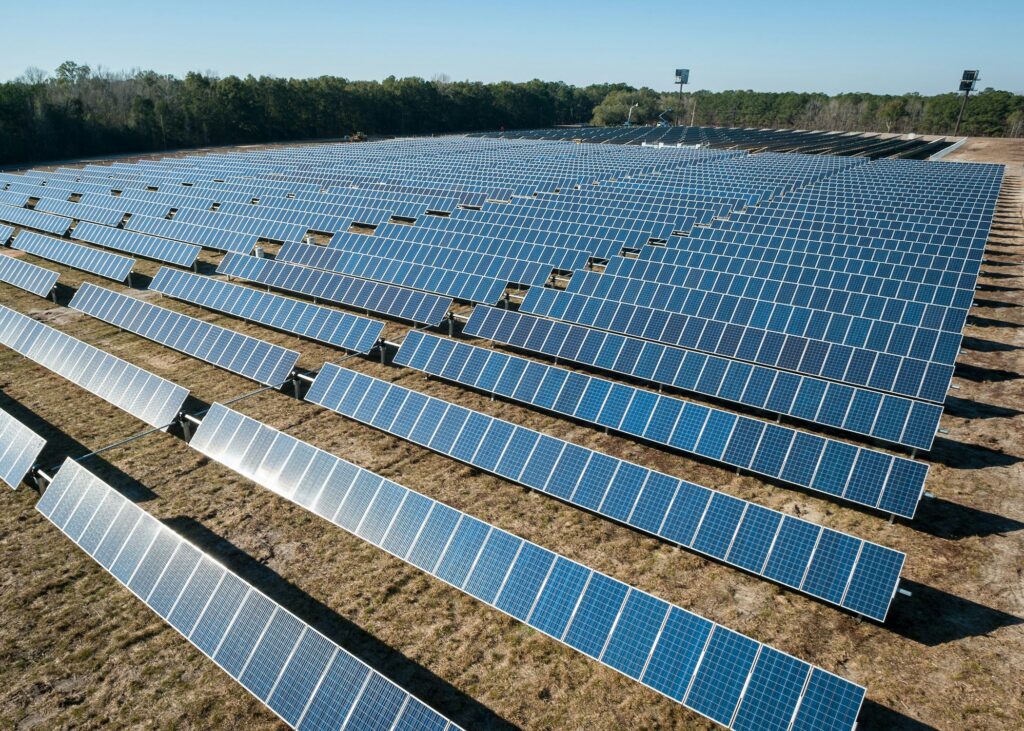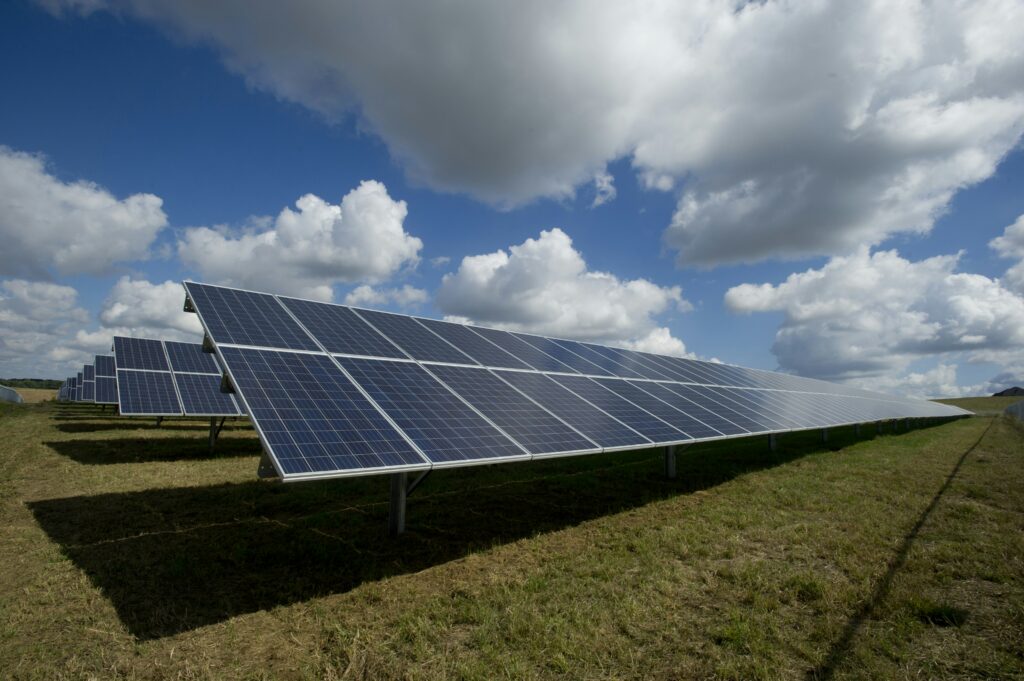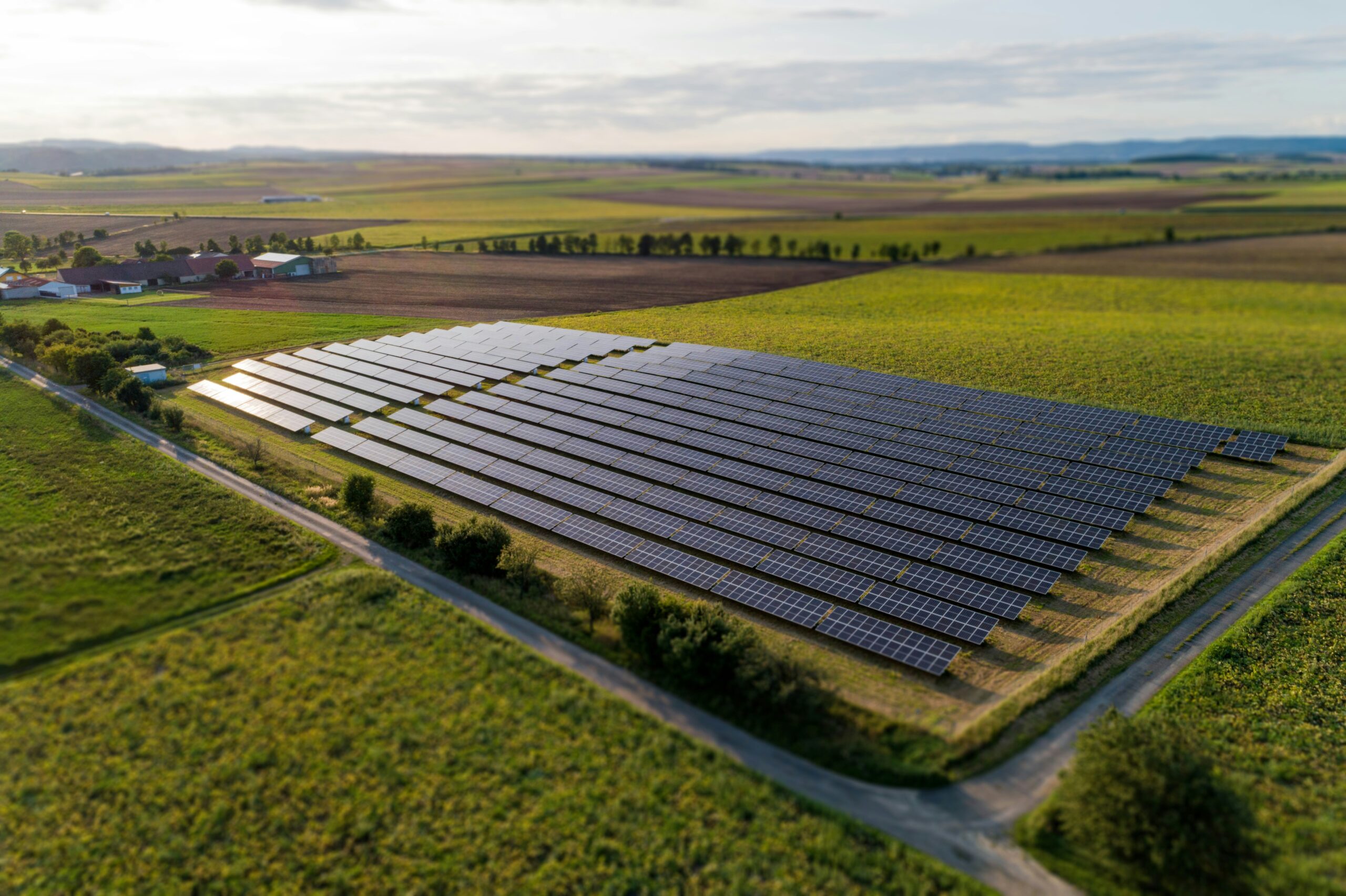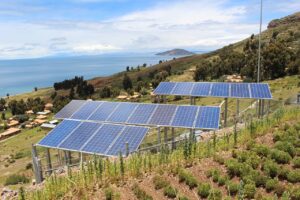Imagine a world where the sun becomes our main source of power, where every household is powered by clean and renewable energy. The notion of powering our homes solely with solar energy is an enticing one, but is it truly feasible? In this article, we explore the possibilities and intricacies of harnessing the sun’s rays to meet all our energy needs. Prepare to be enlightened as we shed light on the topic of powering your entire home using solar energy.

Understanding Solar Energy
How solar energy works
Solar energy is a renewable source of power that harnesses the energy from the sun and converts it into electricity. The process begins with solar panels, which are made up of photovoltaic (PV) cells that absorb sunlight. These cells contain materials such as silicon that release electrons when exposed to sunlight, creating an electric current. This direct current (DC) flows from the solar panels to an inverter, which converts it into alternating current (AC) that can be used to power electrical devices in our homes.
Advantages of solar energy
Solar energy offers numerous advantages. Firstly, it is a clean and renewable source of power, meaning it does not produce harmful emissions and does not deplete natural resources. Additionally, solar energy systems are relatively low maintenance and have a long lifespan, typically ranging from 25 to 30 years. Solar energy can also provide financial benefits by reducing monthly electricity bills and even generating excess power that can be sold back to the grid.
Components of a solar energy system
A solar energy system consists of several components that work together to convert sunlight into usable electricity. The primary component is the solar panel, which is composed of multiple PV cells. These panels are usually mounted on the roof or on open ground areas to maximize exposure to sunlight. The inverter is another key component, as it converts DC power from the solar panels into AC power that can be used in our homes. Additionally, batteries may be included to store excess power generated during the day for use during the night or during power outages. Other components such as mounting systems, wiring, and meters are also essential for a complete solar energy system.
Calculating Energy Requirements
Determining your energy needs
To determine the energy requirements for your home, it is essential to consider factors such as the number of occupants, typical energy consumption habits, and the types of appliances used. Evaluating your historical electricity bills can provide insight into your average monthly consumption, and by extension, your energy needs.
Assessing your energy consumption
Assessing your energy consumption involves identifying the major energy-consuming appliances in your home and understanding their power requirements. This can be done by referring to the wattage ratings on the appliances or using energy monitoring devices. By tracking your energy usage over a period of time, you can gain a better understanding of your consumption patterns and make more informed decisions about sizing a solar energy system.
Sizing a solar energy system
Sizing a solar energy system involves finding the right balance between your energy needs and the amount of electricity that can be generated by solar panels. To determine the appropriate size, factors such as available roof space, geographical location, and climate conditions must be considered. Additionally, it is important to account for any seasonal variations in energy consumption and the desired level of energy independence.

Solar Panels and Installation
Types of solar panels
There are different types of solar panels available, including monocrystalline, polycrystalline, and thin-film panels. Monocrystalline panels are made from single crystal silicon and are considered the most efficient, while polycrystalline panels consist of multiple silicon crystals and offer a slightly lower efficiency. Thin-film panels, on the other hand, are made by depositing a thin semiconductor material onto a surface and are generally less efficient but more flexible.
Choosing the right solar panels
When choosing solar panels, it is important to consider factors such as efficiency, durability, and warranty. Higher efficiency panels will generate more electricity from the same amount of sunlight, while durability ensures that the panels can withstand harsh weather conditions. Additionally, checking the warranty provided by the manufacturer gives peace of mind in case of any performance issues or damage over time.
Factors to consider for installation
Proper installation is crucial for the optimal functioning and longevity of a solar energy system. Factors to consider during installation include the angle and tilt of the panels, ensuring adequate spacing for maintenance, and selecting the appropriate mounting system based on the type of roof or ground installation. It is essential to hire a professional installer who has experience in solar panel installation to ensure safe and efficient system setup.
Determining the ideal location for solar panels
The ideal location for solar panels is one that receives maximum sunlight exposure throughout the day. This typically means installing the panels on a south-facing roof or a location with minimal shading from trees or other structures. Factors such as the geographical location, climate conditions, and local regulations also need to be considered when determining the ideal placement for solar panels.
Inverters and Batteries
Role of inverters in a solar energy system
Inverters serve a critical role in a solar energy system by converting the direct current (DC) electricity generated by the solar panels into alternating current (AC) electricity that can be used to power our homes. In addition to this conversion, inverters also ensure that the system is synchronized with the electrical grid, allowing excess power to be fed back into the grid.
Different types of inverters
There are several types of inverters available, including string inverters, microinverters, and power optimizers. String inverters are commonly used and are cost-effective for small to medium-sized solar energy systems. Microinverters, on the other hand, are installed on each individual solar panel, allowing for better energy harvesting and system optimization. Power optimizers are similar to microinverters but are typically used in systems with shading issues or complex roof designs.
Importance of batteries for backup power
Batteries play a crucial role in a solar energy system by storing excess energy generated during the day for use during the night or during power outages. The use of batteries allows for greater energy independence and reliability, as the stored energy can be used when the solar panels are not actively generating electricity. However, it is important to consider the additional cost and maintenance associated with installing and maintaining batteries.

Grid Connection and Net Metering
Connecting your solar energy system to the grid
Connecting a solar energy system to the electrical grid allows for the seamless exchange of electricity between your home and the grid. This means that when your solar panels generate more electricity than your home needs, the excess can be sent back to the grid, offsetting your electricity consumption. To connect your system to the grid, it is important to follow local regulations and work with a qualified electrician to ensure a safe and compliant installation.
Advantages of net metering
Net metering is a billing arrangement that allows solar energy system owners to receive credit for the excess electricity they generate and feed back into the grid. This credit can then be used to offset future electricity consumption when the solar panels are not generating enough power, such as during nighttime or cloudy days. Net metering provides financial incentives for solar energy system owners and promotes the efficient use of renewable energy.
Feed-in tariff programs
Some regions offer feed-in tariff programs, which provide a fixed payment or credit for the electricity generated by solar energy systems. This additional financial incentive encourages the adoption of solar energy and promotes the production of renewable electricity. Feed-in tariff programs vary by location, and it is important to research and understand the terms and eligibility requirements before participating.
Maintenance and Monitoring
Regular maintenance practices
Regular maintenance is essential for the optimal performance and longevity of a solar energy system. This includes visually inspecting the solar panels for any damage or debris, checking the wiring connections, and ensuring the inverter is functioning properly. It is also recommended to schedule professional maintenance checks to identify and address any potential issues before they escalate.
Cleaning solar panels
Over time, solar panels can accumulate dust, dirt, and other debris, which can reduce their efficiency. Regular cleaning of solar panels is recommended to ensure maximum power generation. This can be done using water and a soft brush or sponge, avoiding the use of abrasive materials that may scratch the surface of the panels. It is important to follow safety guidelines and consult the manufacturer’s instructions when cleaning solar panels.
Monitoring energy production
Monitoring the energy production of a solar energy system allows homeowners to track its performance and identify any issues or inefficiencies. This can be done through the use of monitoring systems, which provide real-time data on the amount of electricity generated, consumed, and fed back into the grid. By monitoring energy production, it becomes easier to optimize energy usage and identify potential maintenance needs.
Troubleshooting common issues
Despite regular maintenance, solar energy systems may encounter common issues. Some common issues include shading on panels, wiring faults, or inverter malfunctions. It is important to troubleshoot these issues by checking for any shading obstructions, inspecting the wiring connections, and consulting the manufacturer’s troubleshooting guide. In case of persistent issues, it is advisable to seek professional assistance to ensure proper system functioning.
Costs and Financial Considerations
Estimated installation costs
The costs associated with installing a solar energy system can vary depending on factors such as system size, component quality, and installation complexity. It is recommended to obtain quotes from reputable solar installation companies to get an accurate estimate for your specific requirements. Additionally, considering the long-term financial benefits, such as reduced electricity bills and potential incentives, can help justify the initial investment.
Financial incentives and rebates
Many governments, utility companies, and organizations offer financial incentives and rebates to promote the adoption of solar energy systems. These incentives can include tax credits, grants, or rebates that offset a portion of the installation costs. It is important to research and understand the incentives available in your region and take advantage of them to reduce the overall cost of installing a solar energy system.
Return on investment
The return on investment (ROI) of a solar energy system is influenced by various factors such as installation costs, energy savings, and incentives. By calculating the payback period, which is the time it takes for the cost of the system to be recovered through energy savings, homeowners can assess the financial viability of investing in solar energy. The ROI can vary depending on the energy consumption, available incentives, and the cost of electricity in your area.
Financing options
To make solar energy systems more accessible, various financing options are available. These include solar loans, lease agreements, and power purchase agreements. Solar loans allow homeowners to finance the installation costs over a period of time with fixed interest rates. Lease agreements involve renting the solar energy system, and power purchase agreements involve purchasing the electricity generated by the system at a predetermined rate. It is essential to carefully evaluate and compare these financing options to determine the best fit for your financial situation.
Environmental Impact
Reducing carbon footprint
Solar energy is one of the most environmentally friendly sources of power, as it does not emit greenhouse gases during operation. By utilizing solar energy to power our homes, we can significantly reduce our carbon footprint and contribute to the global effort to combat climate change. The reduction in carbon emissions helps to preserve the environment, protect ecosystems, and improve air quality.
Renewable energy contribution
By harnessing solar energy, we are actively contributing to the generation of renewable energy. Solar power is derived from a renewable source – the sun – which will continue to provide energy for billions of years. This contrasts with fossil fuels, which are finite resources and contribute to environmental degradation when extracted and burned. Increased adoption of solar energy systems promotes the transition towards a more sustainable and renewable energy future.
Sustainable and eco-friendly choice
Choosing solar energy for our homes aligns with sustainable and eco-friendly practices. Solar energy is a clean source of power that minimizes our reliance on fossil fuels and non-renewable resources. Additionally, solar energy systems have a long lifespan and low maintenance requirements, contributing to their sustainability. By opting for solar energy, we are making a conscious choice to prioritize the health of our environment and future generations.
Factors to Consider for Full Home Power
Energy requirements
Powering an entire home with solar energy requires careful consideration of energy requirements. Factors such as the number of occupants, energy-consuming devices, and lifestyle habits all contribute to the total energy needed. In analyzing these requirements, it is important to account for fluctuations in energy usage, seasonal variations, and any future expansions or modifications to the home.
Available roof space
The amount of available roof space plays a significant role in determining the size and capacity of a solar energy system. A larger roof area allows for more solar panels, which translates to greater electricity generation potential. Assessing the roof space available and optimizing its utilization ensures sufficient power production to meet the energy demands of a full home.
Geographic location and climate
The geographic location and climate conditions of a region influence the efficiency and productivity of a solar energy system. Areas with high levels of annual sunlight exposure and minimal shading are ideal for solar energy generation. Furthermore, considering regional weather patterns and the availability of sunlight throughout the year is important in determining if solar energy can reliably power a whole home.
Backup power needs
When considering full home power, it is crucial to assess the need for backup power. Solar energy systems connected to the electrical grid can automatically switch to grid power during periods of low sunlight or high energy demand. However, for those seeking complete energy independence or living in areas with frequent power outages, the inclusion of battery storage or backup generators may be necessary. Determining the desired level of backup power is key in designing a solar energy system.
Conclusion
Feasibility of powering a whole home with solar energy
In conclusion, it is indeed feasible to power an entire home using solar energy. With advancements in technology, increased efficiency, and various incentives, solar energy systems have become a viable and sustainable option for residential power generation. However, careful consideration of factors such as energy requirements, available roof space, location, and backup power needs is essential in designing a system that meets the demands of a full home.
Benefits and considerations
The benefits of powering a whole home with solar energy are numerous. Solar energy is clean, renewable, and helps reduce our carbon footprint. It offers long-term financial savings through reduced electricity bills and potential incentives. Additionally, it provides energy independence and resilience through backup power options.
However, there are also considerations to keep in mind. The initial installation costs can be significant, and the efficiency of a solar energy system can be influenced by factors such as weather conditions and shading. Proper maintenance and monitoring are necessary to ensure optimal performance. Additionally, the feasibility of full home power depends on individual energy requirements, roof space, geographical location, and backup power needs.
Future of solar energy
The future of solar energy is promising. As technology continues to advance, solar energy systems are becoming more efficient, affordable, and accessible. Increasing global awareness of the need for sustainable energy solutions is driving the adoption of solar power on a larger scale. With ongoing research and development, it is expected that solar energy will play an even larger role in meeting global energy demands, reducing carbon emissions, and creating a more sustainable future for generations to come.




